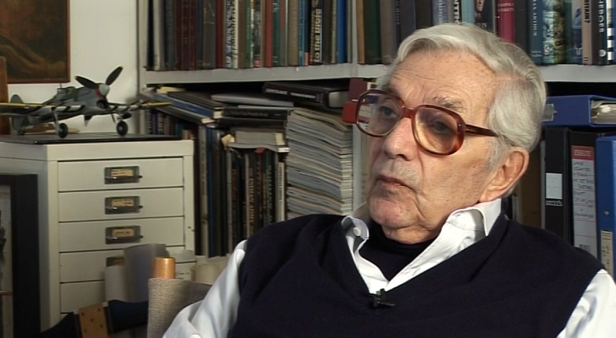NEXT STORY

The Cuban
RELATED STORIES

NEXT STORY

The Cuban
RELATED STORIES


|
Views | Duration | |
|---|---|---|---|
| 131. Chicago recce | 102 | 01:43 | |
| 132. 'The first and last major musical I had ever designed' | 71 | 01:30 | |
| 133. Pennies from Heaven: problems selling the film | 78 | 01:15 | |
| 134. Getting Steve Martin to dance like Fred Astaire | 163 | 02:14 | |
| 135. The shiny floor dilemma | 81 | 03:10 | |
| 136. The Cuban | 60 | 01:48 | |
| 137. Designing the L-street and 'Hopper' cafe | 76 | 02:35 | |
| 138. Becoming associate producer | 69 | 02:19 | |
| 139. An Oscar nomination for The Adams Family Values | 115 | 01:28 | |
| 140. Projects that never made it to the screen | 80 | 01:25 |


I had a problem because it looked like a fairly simple set, but I always was wondering how – in these American dance numbers of the '30s and '40s – the floors were so shiny and... and not a scratch on them and so on, and I... I had learnt my lesson from Kubrick's [Dr.] Strangelove when I tried to do a black shiny floor and it looked like a seascape, you know, until we found out that we had to have its under-floor and a much heavier section of wood.
So now I'm in Hollywood where they have done this thing for films and films, and the construction manager, who was reasonably young, said to me, ‘Ken, you don't have to worry, you want a shiny floor, I will give you a shiny floor, you know, we've done it before’. I said, ‘Well, you know, be my guest, I'll be happy’, you know, and of course Herb [Ross] and I, we arrived about two days before shooting to look at the floor, and the floor's no good, whereas Fred Astaire's floor done 20 years before or something like that, you don't see a scratch or anything. You look at some of these old musicals of Astaire's or Gene Kelly and those men.
So now this reasonably young construction manager spends sleepless nights, I mean, nearly suicidal, rings up everybody he knows in Hollywood and eventually came up with a terrazzo floor, which was cast and, you know, it's like concrete. I mean it's... it's liquid, and then hardens like marble, terrazzo, and then you polish it and it is… it becomes perfect. I mean, there are no unevenness, it's... it's the perfect floor.
The problem which nobody thought about, it's damn tough on the dancers because it's... it gets so hard, there's no spring in it at all, that they all had pretty painful legs after, but... but at least it worked, you see, and it is… I mean, it is a big treat to see Steve and Bernadette Peters dancing together with Astaire and Ginger Rodgers, but I think it worked.
Sir Kenneth Adam (1921-2016), OBE, born Klaus Hugo Adam, was a production designer famous for his set designs for the James Bond films of the 1960s and 1970s. Initially, he trained as an architect in London, but in October 1943, he became one of only two German-born fighter pilots to fly with the RAF in wartime. He joined 609 Squadron where he flew the Hawker Typhoon fighter bomber. After the war, he entered the film industry, initially as a draughtsman on This Was a Woman. His portfolio of work includes Barry Lyndon and The Madness of King George; he won an Oscar for both films. Having a close relationship with Stanley Kubrick, he also designed the set for the iconic war room in Dr Strangelove. Sir Ken Adam was knighted by Queen Elizabeth II in 2003.
Title: The shiny floor dilemma
Listeners: Christopher Sykes
Christopher Sykes is an independent documentary producer who has made a number of films about science and scientists for BBC TV, Channel Four, and PBS.
Tags: Hollywoood, USA, Herbert Ross, Fred Astaire, Gene Kelly, Steve Martin, Bernadette Peters, Ginger Rodgers
Duration: 3 minutes, 10 seconds
Date story recorded: December 2010 and January 2011
Date story went live: 18 November 2011